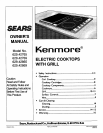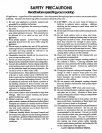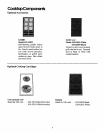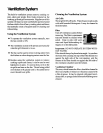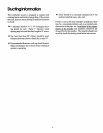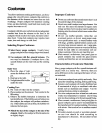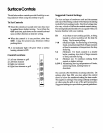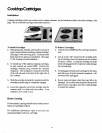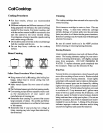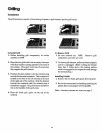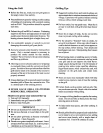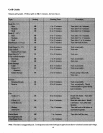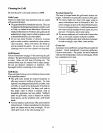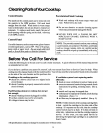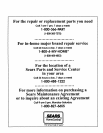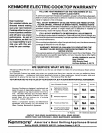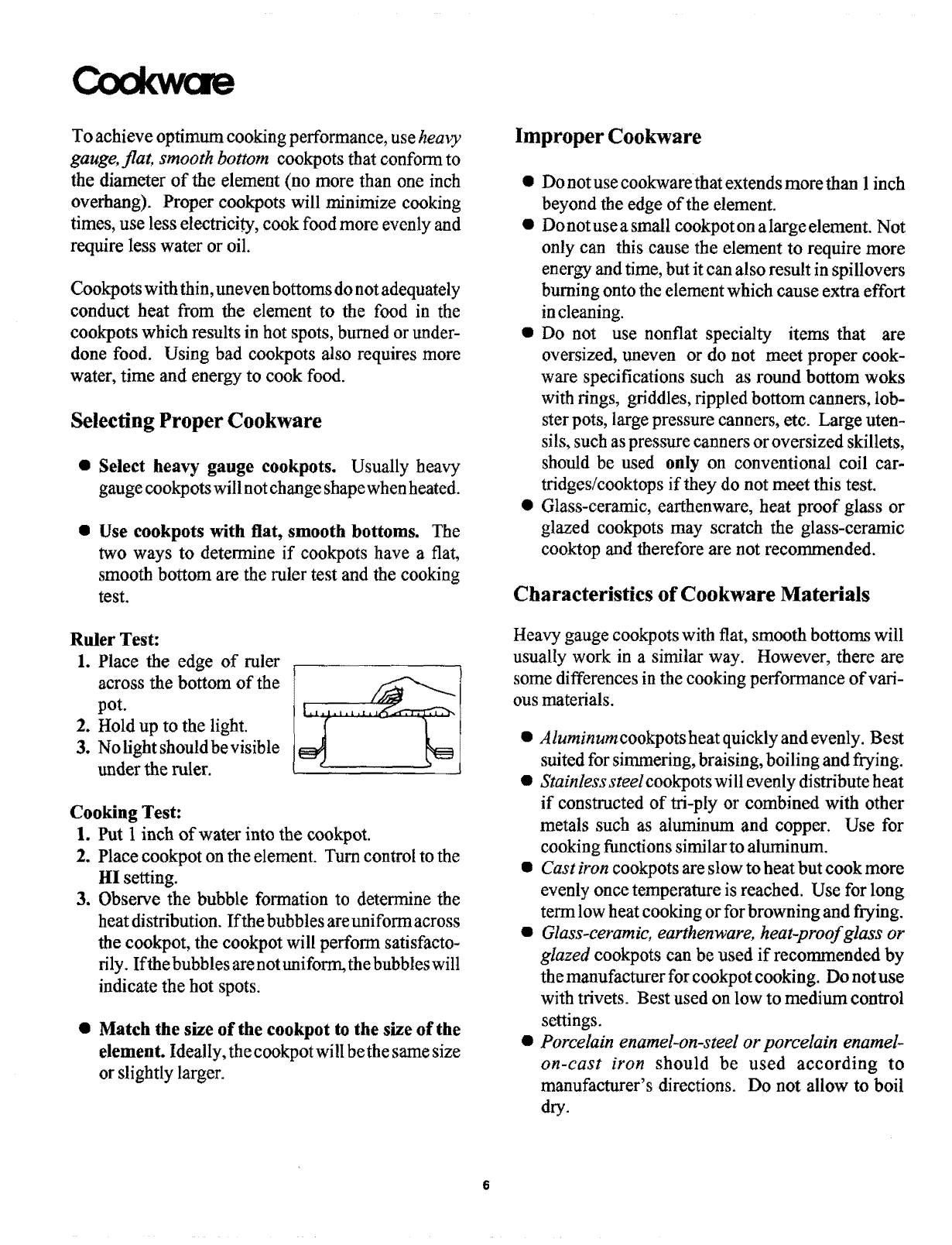
Coo ,qol
To achieve optimum cooking performance, use heavy
gauge, fiat, smooth bottom cookpots that conform to
the diameter of the element (no more than one inch
overhang). Proper cookpots will minimize cooking
times, use less electrici U, cook food more evenly and
require less water or oil.
Cookpots with thin,uneven bottoms do not adequately
conduct heat from the element to the food in the
cookpots which results in hot spots, burned or under-
done food. Using bad cookpots also requires more
water, time and energy to cook food.
Selecting Proper Cookware
• Select heavy gauge cookpots. Usually heavy
gauge cookpots will not change shape when heated.
• Use cookpots with flat, smooth bottoms. The
two ways to determine if cookpots have a fiat,
smooth bottom are the ruler test and the cooking
test.
Ruler Test:
1. Place the edge of ruler
across the bottom of the
pot.
2. Hold up to the light.
3. No light should be visible
under the ruler.
Cooking Test:
1. Put 1 inch of water into the cookpot.
2. Place cookpot on the element. Turn control to the
HI setting.
3. Observe the bubble formation to determine the
heat distribution. Ifthebubbles areuniformacross
the cookpot, the cookpot will perform satisfacto-
rily. If the bubbles are not uniform, the bubbles wilt
indicate the hot spots.
• Match the size of the cookpot to the size of the
element. Ideally, the cookpot will be the same size
or slightly larger.
Improper Cookware
• Do not use cookware that extends more than 1inch
beyond the edge of the element.
• Do notuse a small cookpot on aIarge element. Not
only can this cause the element to require more
energy and time, but it can also result in spillovers
burning onto the element which cause extra effort
in cleaning.
• Do not use nonflat specialty items that are
oversized, uneven or do not meet proper cook-
ware specifications such as round bottom woks
with rings, griddles, tippled bottom canners, lob-
ster pots, large pressure canners, etc. Large uten-
sils, such as pressure canners or oversized skillets,
should be used only on conventional coil car-
tridgesicooktops if they do not meet this test.
• Glass-ceramic, earthenware, heat proof glass or
glazed cookpots may scratch the glass-ceramic
cooktop and therefore are not recommended.
Characteristics of Cookware Materials
Heavy gauge cookpots with flat, smooth bottoms will
usually work in a similar way. However, there are
some differences in the cooking performance of vari-
ous materials.
• Aluminumcookpotsheatquicklyandevenly. Best
suited for simmering, braising, boiling and frying.
• Stainlesssteelcookpotswillevenlydistributeheat
if constructed of tri-ply or combined with other
metals such as aluminum and copper. Use for
cooking functions similar to aluminum.
• Cast iron cookpots are slow to heat but cook more
evenly once temperature is reached. Use for long
term low heat cooking or for browning and frying.
• Glass-ceramic, earthenware, heat-proofglass or
glazed cookpots can be used if recommended by
the manufacturer for cookpot cooking. Do not use
with trivets. Best used on low to medium control
settings.
• Porcelain enamel-on-steel or porcelain enamel-
on-cast iron should be used according to
manufacturer's directions. Do not allow to boil
dry.



